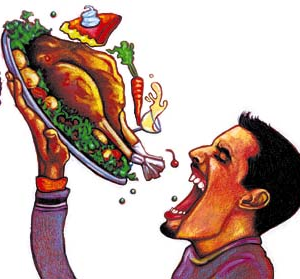The source of the frequently cited "fact" is Max Wishnofsky. However, after conducting research, it is evident that the 3,500-kcal rule (also known as Wishnofsky's Rule) is not only likely erroneous, but it also causes people to overestimate or have unrealistic expectations of weight loss.
Due to the increasing prevalence of obesity, with no clear direction. I decided to re-exam what our general current thinking is based upon. Here is an article of interest that expands on that thinking.
The Harris-Benedict equation was created in 1918 (revised in 1984) or the Mifflin-St. Jeor equation created in the 1990's uses this figure as a basis for their calculation of Basal Metabolic Rate "BMR." However, studies have demonstrated these equations can have inaccuracies ranging from 10% -36% of true Resting Metabolic Rate "RMR."
Technically, BMR measures energy expenditure in a darkened room (reclining position) after eight hours of sleep and following a 12-hour fast whereas RMR measurements are less restrictive and reflect the body’s resting energy expenditure after an overnight fast. lean body mass will significantly influence RMR and should always be considered.
Body fat is not solely composed of pure fat; rather, it comprises adipocytes (fat cells) that also hold water and proteins.
Wishnofsky based his estimation of the 3,500-calorie rule on previous research which suggested that a pound of human adipose tissue is 87% fat, equivalent to 395 grams of fat. He also assumed that animal fat contains 9.5 calories per gram. By critically analyzing the relevant literature from approximately 1958 and applying additional assumptions, he arrived at his published estimate. with the result that patients have been blamed and potentially stigmatized or blame themselves for a lack of willpower and motivation. (Hall and Kahan, Medical Clinics of North America, 2018)
It has been estimated that roughly 45% of an obese person's weight is water. Assuming a 45% water factor, and applying this percentage to a hypothetical pound of human body fat (453.592 grams) yields a water weight of 204.1164 grams. Subtracting this from the total weight leaves 249.4756 grams of fat, which when multiplied by the updated caloric content of 9 calories per gram of fat gives a total of 2,245.2804 calories. This number is significantly lower than Wishnofsky's assumption of 3500 calories.
Using a 30% factor for water, and applying this 30% value to our hypothetical pound of human body fat (453.592 grams) we arrive at a water weight of 136.0776 grams and total fat grams of 317.5144 grams, times the updated number of calories per gram of fat (9) we arrive at a caloric content of just 2857.6296 for our pound of fat, Far away from Wishnofsky's 3500 assumption.
One (1) pound of water weighs 453 grams. One (1) pint of water weighs 473.18 grams. An average adult male will excrete about 1,988 mL = 4.3 lbs of urine a day. I believe the minimum required water intake for a healthy male is approximately 4 pints daily, (which can be acquired from a variety of sources) with additional amounts as needed for exercise or tasks.
Physical activity is often recommended to be included in weight loss strategies and as a tool to maintain a healthy weight, despite its modest effect on energy expenditure and overall body weight, it is not argued that it helps develop or maintain muscles or related benefits, but as to weight loss, it's a loser.
Additional Reading:
- Total body water content in normal and grossly obese women
The overweight women, with two exceptions, had total body water values in the expected range, which indicated that they were accumulating fat, not water. - Body Fat | The Nutrition Source
Learn about the different types of body fat, as well as methods for measuring fat beyond BMI. ... Divide your weight in pounds by your height in inches. - Body Water: Percentage and Ratios You Should Know
Body water makes up the largest percentage of body weight. Let's learn more about ... Overall your total body weight can be 45-65% water.
















